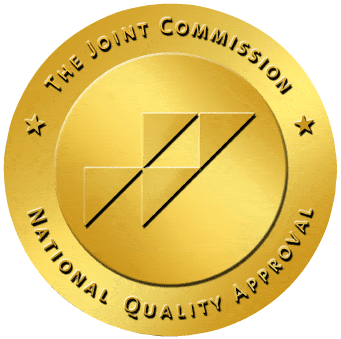Post Traumatic Stress Disorder and Addiction
A Comprehensive Guide

Post Traumatic Stress Disorder and Addiction
A Comprehensive Guide
Table of Contents
Introduction
Post traumatic stress disorder (PTSD) can happen to anyone at any age. The National Center for PTSD reports: 1
Approximately 7 to 8 of every 100 people will experience PTSD at some point in their lifetimes.
About 3.6% of Americans had PTSD in the past year.
Women are more likely to develop PTSD than men.
Other research studies report that:2
People with PTSD often also have substance use problems requiring treatment at a rehab facility.
What is Post Traumatic Stress Disorder?
PTSD is the reaction a person has to a highly stressful event. Not everyone who is exposed to a traumatic event develops post traumatic stress disorder. Approximately 50% of adult Americans will face at least one traumatic event in their lives, but most do not then get PTSD.3
People who experience post traumatic stress disorder may have recurring scary thoughts and memories of the event. It’s normal to feel scared or shocked during and after a frightening, stressful experience. These reactions are part of our natural “fight-or-flight” response to danger. Fear creates many rapid responses in our bodies so we can defend ourselves or avoid the threat.
Most people will experience a range of reactions after trauma, but most recover on their own. The symptoms fade naturally. But there are those individuals whose symptoms persist. They may be diagnosed with PTSD. People who have PTSD may feel stressed or frightened, even when they are not in danger.PTSD
PTSD Risk and Resilience Factors
Risk factors for PTSD stress disorder include:
Surviving frightening and dangerous traumas
Getting injured
Seeing people get injured or die
Childhood trauma
Feeling helplessness, horror, or extreme fear
Little or no social support after the event
Added stress after the trauma (pain, injuries, losing a loved one, job loss, losing a home)
A history of mental health illness or substance misuse/abuse
Post Traumatic Stress Disorder Resilience Factors
Reaching out for help and support from friends and family
Going to support group meetings after the trauma
Learning how to feel good about one's actions during the traumatic event
Developing ways of dealing with the traumatic event
Learning from the trauma
Being able to act and respond in positive ways despite experiencing trauma-related fear
Common Causes of PTSD
Generally, events that cause post traumatic stress disorder include, but are not limited to:
Combat
Violent personal assaults
Natural or human-caused disasters
Other types of violence
Combat and PTSD
War is a highly stressful and dangerous experience. The stress of trying to survive mortal danger creates tremendous pressure. The shock and horror of the injuries and death war causes can stick with a person long after the war ends.

In the past, PTSD in war veterans was called shell-shock or battle fatigue. After the Vietnam war, “post-Vietnam syndrome” was the term used. It’s estimated that about 700,000 Vietnam veterans (about 25%) have needed help for problems related to combat exposure.4
Depression is the most common mental health issue along with PTSD found in military veterans.4 Major depression is 3 to 5 times more likely to develop in vets with post traumatic stress disorder than those without PTSD.4 Anxiety and substance abuse issues are also commonly seen co-occurring conditions in military veterans that have PTSD.4
Violent Personal Assaults
Violent assaults upon people, including sexual assaults, can lead to PTSD. Sexual assault is defined as when sexual contact is made without voluntary consent. It is an act that violates a person’s sense of control and choice. Violent attacks that are life-threatening, involve major force or result in physical injuries may lead to post traumatic stress disorder.
Accidents
Motor vehicle accidents and other mishaps that shock or cause injury can lead to PTSD. Many victims of serious motor vehicle accidents experience violent, unexpected impacts, and sudden pain. Fear of the wreck’s results on the driver and the passengers during the episode is also stressful. These taken together can create such a high level of trauma that PTSD can be the result for some.
Natural or Human-Caused Disasters
Natural and human-made disasters can lead to many different mental and physical effects. Post traumatic stress disorder is a common post-disaster disorder. Disasters like:
Earthquakes
Hurricanes
Tornadoes
Wildfires
Landslides
Floods
Terrorist attacks

All those disasters can contribute to PTSD in the people who experience them. First responders and disaster workers who help victims are particularly vulnerable to PTSD. One study found that an average of 23% of these workers who responded to 9/11 suffered PTSD afterward.5
Signs of Post Traumatic Stress Disorder
For a person to be diagnosed with post traumatic stress disorder, they must experience the following for at least a month (after one month has passed since the trauma event):
- A minimum of one re-experiencing symptom
- A minimum of one avoidance symptom
- A minimum of two arousal and reactivity symptoms
- A minimum of two cognition and mood symptoms
Re-experiencing Symptoms
- Flashbacks where the person keeps reliving the trauma. Physical symptoms include rapid heartbeat or sweating
- Nightmares
- Frightening thoughts
Avoidance Symptoms
- Avoiding objects, events, or places that remind the person of the experience
- Pushing away trauma-related feelings or thoughts
Arousal and Reactivity Symptoms
- Can be easily startled
- Tenseness or feeling on edge
- Angry outbursts
- Sleep problems
- Feelings of detachment or numbness
- In more serious cases of PTSD, the person's ability to function at work, at home and socially is severely impaired
Cognition and Mood Symptoms
- Can't remember parts of the traumatic event
- Negative thoughts about oneself or the world
- Unfounded feelings of blame or guilt
- Loss of interest in pleasurable activities
- Feeling detached or alienated from loved ones
Physical Symptoms of Post Traumatic Stress Disorder
- Chronic pain
- Pain that leads to physical disability
- Nervous, endocrine and immune system stress
Trauma Symptoms in Children
Children and teens exposed to traumatic events can develop PTSD just like adults can. Children and teens exposed to the following are at risk of post traumatic stress disorder:
Violence
Crime
Disasters
War
Sexual abuse
Young people may exhibit symptoms differently from adults.
For children, re-experiencing symptoms can occur through play that repeats trauma-related stories as opposed to memories. Bad dreams may have general themes, rather than specific trauma-related themes.
In children ages 5 and under, these symptoms can include:
Bedwetting after being toilet-trained
Being unable to or forgetting how to speak
Acting out the frightening event repeatedly during play
Being clingy with parents or other adults
Children 6 years and older and teens typically show symptoms that are more like those seen in adults. They may also:
Become disrespectful, disruptive, or destructive
Experience guilt for not preventing injury or deaths
Having thoughts of revenge
Treatments For PTSD
Medications
For people with post traumatic stress disorder, the American Psychological Association recommends prescribing serotonin reuptake inhibitors (SSRIs), such as:
Paxil
Prozac
Zoloft
Also, selective serotonin and norepinephrine reuptake inhibitors (SNRI), such as Effexor, can help with post traumatic stress disorder symptoms.
Talk Therapy
Talking about common reactions to trauma helps people living with PTSD understand their symptoms. Talking also helps them understand why they need help to control symptoms.
Cognitive-behavioral Therapy (CBT)
There are many types of CBT. The most common are:
Exposure Therapy
The counselor helps the person with post traumatic stress disorder confront the trauma-related:
Memories
Situations
Objects
People
Intense emotional or physical responses then come up. The therapist and client discuss how these responses are now unrealistic because the danger has passed.
Exposure therapy involves:
Journaling – Traumatic memories are reviewed in writing in the order they occurred. The thoughts and feelings that were imagined, seen, or felt are written down. This process is repeated until it no longer creates distress. The process is also repeated until trauma-related memories are experienced as simply memories rather than as an event that happens all over again.
In vivo exposure – This process involves having people living with PTSD face now safe situations that they were avoiding. One example is driving a vehicle after an accident. At the start, strong emotions or physical reactions can occur. With repeated exposure, the person realizes that the feared situation is no longer dangerous, and the related anxiety does go away.
Cognitive Restructuring
Stress Management
Relaxation techniques
Deep breathing methods
Positive self-talk
Mindfulness
Eye Movement Desensitization and Reprocessing (EMDR)
Eye movement desensitization and reprocessing targets the intrusive thoughts, emotions, and physical sensations trauma victims experience. The theory is that the traumatic event is not stored correctly in memory. EMDR focuses on stimulating the trauma victim’s brain to store the memories more positively.
In EMDR, the trauma victim pays attention to a back-and-forth movement or sound. During this time, they call to mind upsetting memories until a shift occurs in how he or she experiences that memory.
PTSD Treatment in Children
Children are also treated for post traumatic stress disorder using a variety of methods.
- To begin treatment, the child must be in a safe place. This is particularly important if the child is the victim of abuse or the trauma affected the physical home.
- It’s important that everyone around the child is involved in treatment. This includes parents, caregivers and school staff.
- Psychotherapy in the forms of trauma-focused CBT and exposure therapy similar to those used with adults.
- Medications that are effective in treating the core symptoms of PTSD can help.
Common Co-Occurring Conditions
Substance Use Disorders and PTSD
People with post traumatic stress disorder need to get the treatment they need. Without the right help, they can then try to solve the issue on their own.
People living with PTSD may turn to drugs and alcohol in an attempt to self-medicate to make symptoms go away. They use substances to push away feelings of sadness, anxiety, and irritability. Research supports that substance use disorders (SUDs) occur in many individuals with post traumatic stress disorder:
20% of people with PTSD in the general population also have a SUD.2
Veterans with PTSD were 3 to 4.5 times more likely to have a SUD compared with those with no mental health issues2
In the 1980s, research showed that 74% of Vietnam veterans with PTSD also had a substance use disorder.4
Another reason people with post traumatic stress disorder may use drugs or alcohol is to offset symptoms. For example, the individual who feels isolated may drink to be more socially outgoing. Another example is someone who takes sedatives to sleep because PTSD nightmares disrupt sleeping.
When SUDs and post traumatic stress disorder exist together, it can be harder to treat than either disorder alone. The popular treatment for post traumatic stress disorder called exposure therapy may worsen a substance use disorder.
More on PTSD and Addiction
Another reason some people with post traumatic stress disorder may drink or take drugs is from endorphin withdrawal.6 Immediately following a traumatic event, the level of endorphins in the brain rises. These levels remain high to help numb the physical and emotional pain of trauma. Once the trauma has passed, endorphin levels start to go down. This decrease can lead to endorphin withdrawal that can go on for hours or days. Endorphin withdrawal may create emotional distress and contribute to other PTSD symptoms.
Drugs or alcohol can be used to compensate for the shortage of endorphin activity after the traumatic event. Alcohol and drugs are then used that increase endorphin activity. This helps to avoid the emotional distress the endorphin withdrawal is causing.6
Continued use of drugs and alcohol can likely lead to addiction.
Addiction treatment for people with PTSD needs to decrease the person’s feelings of helplessness. It’s also about helping them cope with the trauma. With a new sense of autonomy, they can then more easily recover from PTSD and SUDs. Also, the use of drugs that block the effects of substances can help someone break free of addiction.
Depression and PTSD
People with PTSD can also have a major depressive disorder (MDD). MDD is characterized by:
Depressed mood
Loss of interest in activities
Guilt
Low self-esteem
Sleep problems
Appetite issues
Low energy
Concentration problems
Thoughts of death
MDD is diagnosed if these symptoms happen for at least two weeks and interfere with personal relationships, school, and work. Many of the therapies used to treat PTSD and addiction can also be modified to include depression treatment.
Post Traumatic Stress Disorder Myths
Myth #1: People with PTSD are Weak-Minded
People who have never experienced a traumatic event or people who have and did not get post traumatic stress disorder may regard PTSD as a sign of “weakness.” It is not a sign of weakness. It’s the way a person’s brain processes memories, and that could be genetic.
Myth #2: PTSD Looks the Same for Everyone Who Has It
While there are certain groups of PTSD symptoms, not everyone will experience all of them. Also, people will develop certain coping strategies that will differ from person to person. For example, one person who has PTSD will continuously talk about the event. Others will refuse to talk about it at all.
Myth #3: PTSD Only Develops Right After the Trauma Event Happens
Most people experience stress reactions right after a traumatic event. For most, after a month, the stress reactions subside. If someone has stress reactions continuing after the first month, that last for at least a month, it could be post traumatic stress disorder. But not everyone has this continuous timeline. PTSD can be delayed by months and sometimes years. Sometimes post traumatic stress disorder is suspended in a person’s mind, and stress triggers activate PTSD.
Myth #4: PTSD is Not Treatable
PTSD is treatable. Different types of treatments for different people can be effective. People who have found their post traumatic stress disorder treatment unsuccessful should try other options. Talk with a professional to review the options that can get successful results.
Myth #5: People with PTSD are Dangerous
Distorted images of crazed war veterans with PTSD are dramatized in movies and on television. This gives the false impression that people with post traumatic stress disorder are dangerous. PTSD symptoms are not violence or psychosis. Instead, PTSD symptoms are more about coping with memories and the effects of a traumatic experience.
Getting Help for PTSD
If you or a loved one are dealing with post traumatic stress disorder, without the right treatment, the symptoms can intensify. A person living with PTSD will face a life that deteriorates if PTSD is not addressed. Recovery is possible. Waiting it out or attempting to recover without help can make things worse. Talk to your doctor or mental health professional about the many resources available. If you have post traumatic stress disorder and a substance use disorder, you should contact an addiction treatment facility to learn how addiction professionals can help you recover.
Resources
- https://www.nimh.nih.gov/health/topics/post-traumatic-stress-disorder-ptsd/index.shtml
- https://www.ncbi.nlm.nih.gov/pmc/articles/PMC4195227/
- https://www.nimh.nih.gov/health/statistics/post-traumatic-stress-disorder-ptsd.shtml
- https://www.ncbi.nlm.nih.gov/pmc/articles/PMC5047000/
- https://www.ncbi.nlm.nih.gov/pmc/articles/PMC4877688/
- https://pubs.niaaa.nih.gov/publications/arh23-4/256-262.pdf














